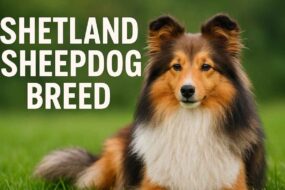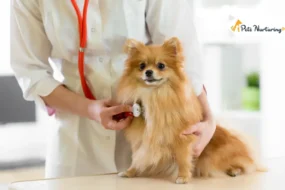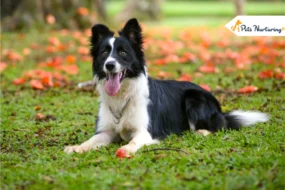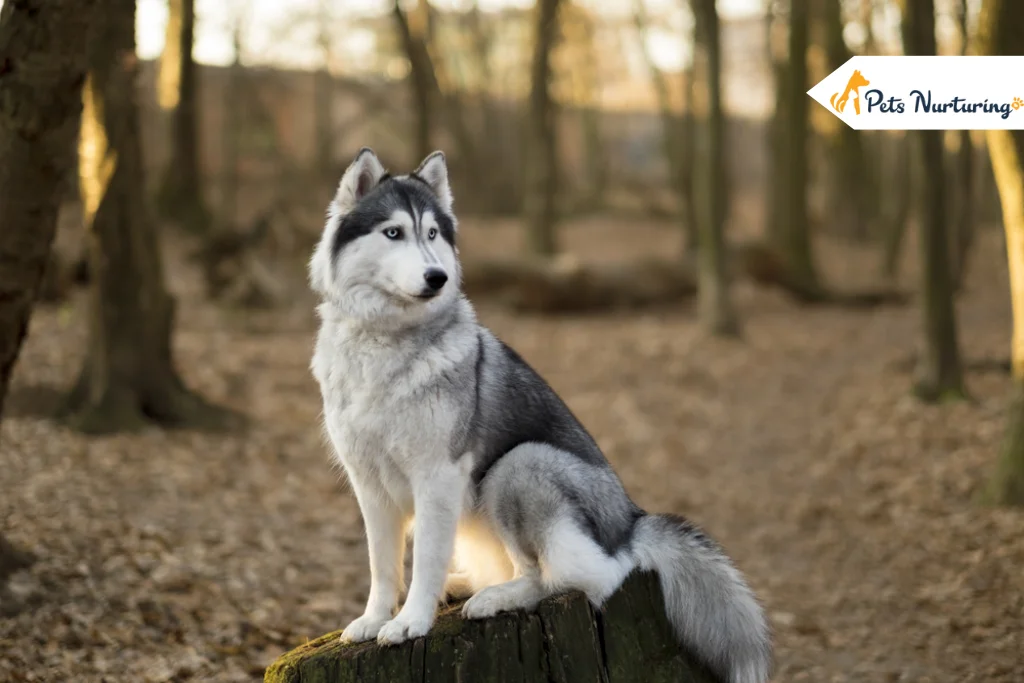
A gentle giant resembling an Arctic wolf – yes, we are talking about none other than the Siberian Husky Dog! Huskies are strong and loving dogs known for sledding in the snow, but they’ve also become very popular pets worldwide.
Lots of people love them because they’re not just cute but also really friendly. They’re very intelligent and love playing and being close to humans. But hey, before you start looking for a Siberian Husky for sale, do your homework! These dogs have lots of energy and need plenty of exercise, so they might not be right for everyone.
But if you want a smart, outgoing, and friendly dog, a Siberian Husky is the best pick! Want to know more about this dog breed? Keep reading our guide.
Breed Overview
The Siberian Husky is a graceful and athletic breed, hailing from Northeast Asia originally as a sled dog.
They’re friendly, lively, and a tad mischievous. While they’ve got loads of energy and can be pretty intense, with the right care, they’re affectionate and gentle.
If your home’s always buzzing and you have time to spare for your furry friend, the Siberian Husky could be your perfect match.
Treat them well, give them attention, and they’ll be great companions. Plus, when you train and socialize them well, they’ll get along with kids, too.
Siberian Husky Breed Overview
Breed Group: Working
Height: 20 to 23.5 inches (Male), 20 to 22 inches (Female)
Weight: 45 to 60 pounds (Male), 35 to 50 pounds (Female)
Lifespan: 12 to 14 years
Coat: Thick and dense medium-length double coat
Color: Various colors and markings, commonly seen in black, gray, red, or sable
Temperament: Friendly, intelligent, outgoing, mischievous
Grooming Needs: Regular brushing, sheds heavily twice a year
Hypoallergenic: No
Origin: Siberia
History
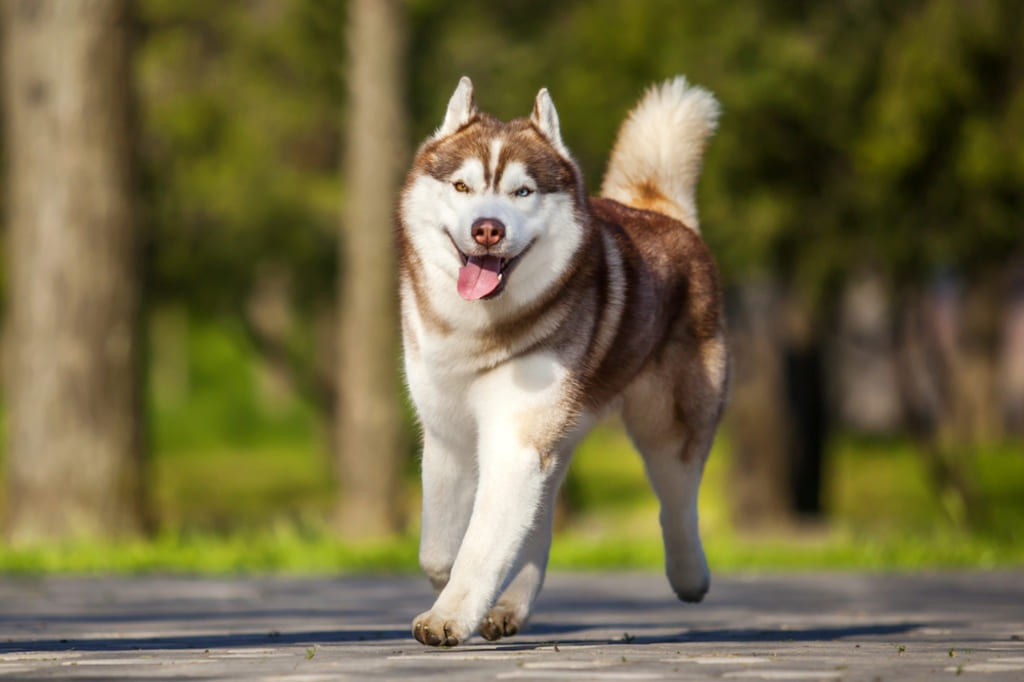
The Siberian Husky has an extensive and captivating lineage deeply rooted in its role as a working dog, tracing back over 4,000 years. They’re part of the Spitz family, genetically speaking.
Originally developed in Eastern Siberia by the Chukchi people residing in the Chukchi Peninsula, these dogs served dual purposes: as cherished companions within the family circle and as vital sled dogs.
They played a crucial role in helping the Chukchi community hunt and traverse long distances, enduring the harsh climates of the Siberian Arctic.
In 1909, Siberian Huskies were introduced to Alaska for sled-dog racing, quickly gaining attention due to their consistent victories, capturing the public’s admiration.
As per the Siberian Husky Club of America, Alaskans weren’t initially impressed with the Siberian breed. But over the century that followed, the Huskies became very popular as sled dogs. You might’ve heard about their incredible feat: they carried antitoxins to save people during a diphtheria outbreak in Nome, Alaska.
That epic journey is remembered every year in the Iditarod Trail Sled Dog Race. Plus, there’s a statue in Central Park, New York City, honoring Balto, the lead dog who completed that heroic serum run back in 1925.
As the 20th century progressed, these remarkable dogs made their way to the United States, gaining official recognition from the American Kennel Club in 1930.
Today, while Siberian Husky dog breeds still partake in sled dog activities, they have garnered widespread appreciation primarily as beloved companion animals. They have also become very popular as pet dogs. In fact, they’re the 12th most popular dog breed in the U.S., according to the AKC. Top of Form Top of Form Top of Form
Appearance
1. Size and Height
Siberian Huskies fall into the mid-sized category. The typical adult male Husky stands around 20 to 23.5 inches tall, while females are a bit shorter, usually between 20 to 22 inches. Males weigh between 45 to 60 pounds, while females weigh about 35 to 50 pounds.
Usually, these Siberian Husky puppies hit their full height by about 12 months old. But they keep gaining weight and muscle until they’re about three years old if they’re male or two years old if they’re female.
| Characteristic | Male | Female |
| Height | 20 to 23.5 inches | 20 to 22 inches |
| Weight | 45 to 60 pounds | 35 to 50 pounds |
2. Head and Ears
Siberian Huskies have a proportional head with a sleek, tapered muzzle and well-defined stop. Their legs are sturdy, providing agility and grace in movement. Ears stand erect, medium-sized, and triangular, contributing to their alert and expressive demeanor.
3. Eyes
They have almond-shaped eyes, moderately spaced and set slightly slanted. The American Kennel Club (AKC) allows for a variety of eye colors, such as brown, blue, or black, even permitting different colors in each eye (heterochromia).
4. Nose
Show-quality Huskies typically have neither pointed nor square noses. Depending on their coat color, their noses can be black, tan, liver, or light tan.
Sometimes, these dogs might exhibit a “snow nose” or “winter nose,” a condition called hypopigmentation, which lightens their noses. This feature is accepted in show competitions.
5. Tail
Siberian Husky tails are heavily furred, and these dogs often curl up with their tails covering their faces for extra warmth. This cuddly position, known as the “Siberian Swirl,” helps them keep warm.
According to AKC guidelines, their tails should be expressive, hanging low when relaxed and curving upwards in a sickle shape when they’re excited or interested in something.
Coat and Color
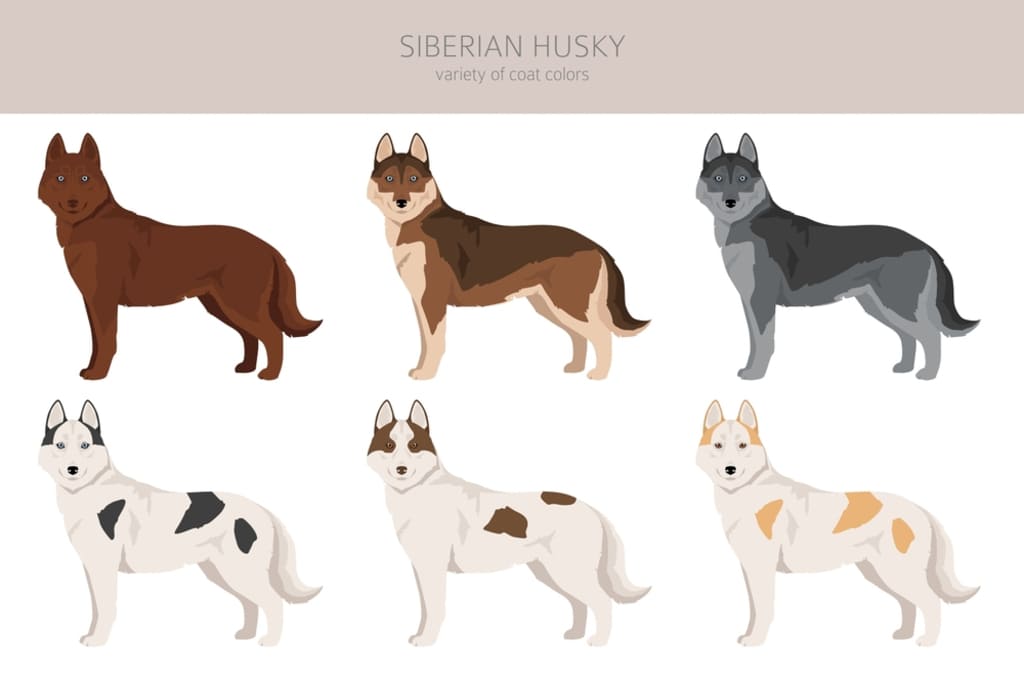
The Siberian Husky has a thick double coat, unique among most breeds. It consists of a dense, wavy undercoat and longer straight guard hairs, offering protection in Arctic winters and reflecting heat in summer.
This hardy coat endures extreme temperatures, from -50 to -60 °C. A lengthy “wooly” coat is considered a flaw due to its lack of insulation, hindering work and causing matting.
Siberian Huskies showcase a diverse range of colors and patterns, often featuring white paws, facial markings, and tail tips. Coat colors vary from black and white to copper-red and white, pure white, grey and white, and the rare “agouti” coat.
Some exhibit the “saddleback” pattern or striking masks and facial markings. All coat colors are accepted except for the merle pattern, which is prohibited due to associated health concerns and breeding purity.
Characteristics and Temperament
Siberian Huskies are lively and love to stay active. They’re mischievous yet affectionate, great for families with proper care.
But without enough exercise and attention, they might get into trouble—think howling, digging, or finding ways to escape fences. They’re friendly with kids, but supervision’s key.
As working dogs who adore family time, they need lots of attention. They’re fine around strangers and other dogs, lacking the possessiveness of guard dogs. However, due to their hunting instinct, they might chase after cats, rodents, or other animals.
Training Huskies can be tough—they’re independent thinkers and might ignore commands they don’t get. Consistent training is vital to prevent them from taking the lead.
Unlike many dogs, they’re not big on food rewards. Instead, they love activities like runs, walks, or playtime with toys.
Huskies crave companionship and need to feel part of a pack, making high, secure fences a must. These dogs are friendly, gentle, and not suited as guard dogs due to their non-aggressive nature.
Here’s an overview:
- Affectionate and friendly
- Great with kids and pets
- High energy levels
- Need plenty of exercise
- Playful and active
- High tendency to bark
- Moderate shedding
- Medium Intelligence
- Training can take effort
- Medium trainability
Health and Nutrition

Siberian Huskies were bred to need less food compared to similar-sized breeds. Give your dog two meals daily, each about a cup of dry dog food.
But remember, their food needs depend on size, age, how active they are, and more. Keep an eye on their weight to avoid them getting too heavy. Talk to your vet about what’s best for your pup.
Veterinarians suggest feeding your Siberian Husky food, approved by the Association of American Feed Control Officials (AAFCO). Your vet can guide you on the best food for your pup. You can also give them homemade raw or cooked food.
To keep their metabolism on track and prevent overeating, offer your Husky several small meals a day instead of leaving food out all day. Siberian Husky puppies might need three or four meals daily.
Since Huskies are active, they thrive on a quality diet approved by AAFCO. Consider food with joint supplements like glucosamine for healthy joints.
Apart from food, you also need to give them clean water at all times. Fill their water bowl with fresh water. If you are using treats to train them, remember to use high-quality ones. According to the American Kennel Club, treats should only make up 10% of your dog’s daily diet.
Common Health Problems
A 1999 ASPCA publication indicates that Siberian Huskies typically live for about 12 to 14 years on average. However, they can still face various health issues:
1. Cataracts
It is a medical condition in which eye lenses can harden, causing white spots and vision loss. Surgery can help treat this. If you notice any eye changes in your Husky, see the vet.
2. Progressive Retinal Atrophy (PRA)
It is a genetic eye disease leading to night blindness and eventual loss of day vision. Sadly, there’s no cure for this.
3. Corneal Dystrophy
Corneal Dystrophy is an inherited condition that causes a white spot on the eye’s surface. Usually, it doesn’t hurt but can affect vision. Seek an eye specialist if it worsens.
4. Hypothyroidism
In this condition, the thyroid gland is underworking, causing weight gain, hair loss, and less activity. Treatment involves a daily thyroid supplement.
5. Hip Dysplasia
Hips don’t develop properly, leading to arthritis and difficulty moving. Look out for limping, trouble sitting or standing, or struggling to urinate. Surgery can help if caught early.
Regular vet check-ups and keeping an eye out for any unusual changes in your Husky can help manage these health concerns. Also, when you look for Siberian Husky for sale, select only reputable breeders. Top of Form
Behavior and Training
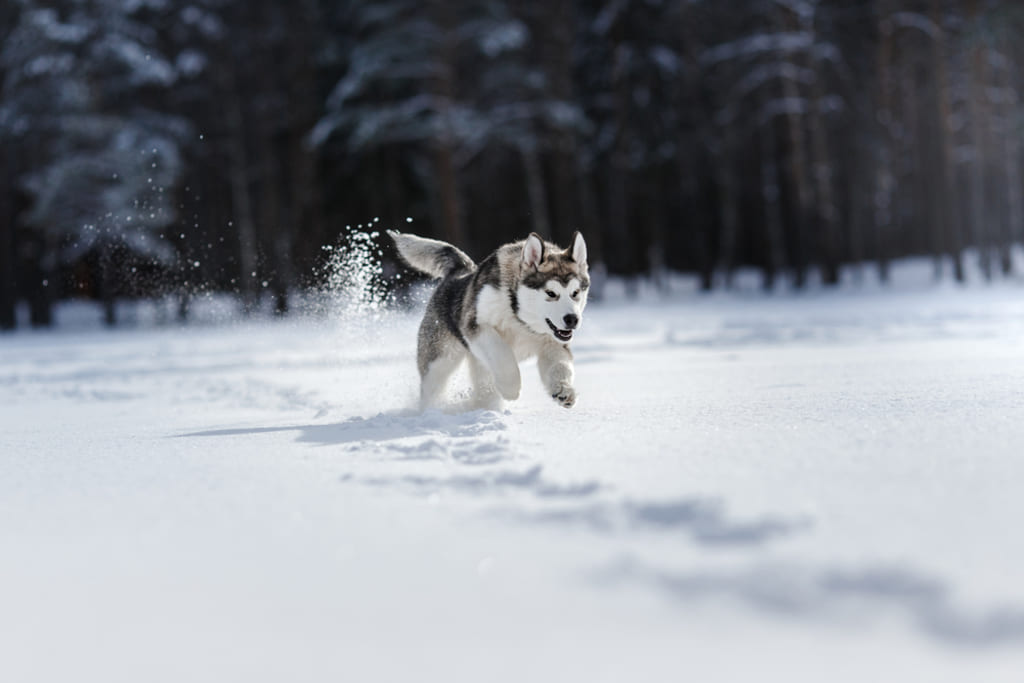
Siberian Huskies are lively and love being part of the family. They’re clever and tend to think for themselves, which, if not corrected early, might lead to issues like barking or chewing things.
Behavior-wise, they’re friendly and usually great with kids and pets, but they need space to run around and be active. When they’re cooped up or lack attention, they can get a bit wild. Always keep an eye on dogs and kids playing together.
When bored, they might become indoor wreckers, dig up the yard, or try to escape for some fun. Keeping them mentally engaged and active is key.
Training should kick off when they’re puppies to fix any unwanted habits before they grow up. Leash training is crucial to prevent them from wandering off. Teaching them not to bark excessively or howl is also important.
They’re a bit independent, so training can be a challenge. Consistent and early training is key, starting as soon as they arrive home. Short, frequent training sessions with treats as rewards can help keep them motivated.
Here are some fun activities to keep them happy:
- Running
- Agility
- Sledding
- Rally
- Fetch
Exercise Needs
Siberian Husky dog breeds are full of energy and thrive with lots of activity. You need to give them at least 40 minutes of daily exercise. They’re at their best when engaged in tasks or activities, enjoying teamwork with their owners in agility, obedience, or rally exercises. Staying active is crucial for their well-being and happiness.
For city dwellers, daily walks or joining dog playgroups can suffice. Their thick fur makes them sensitive to overheating, so in warm areas or during summer, opt for water activities like swimming. To avoid the heat, aim for exercise in the early morning or late evening.
Grooming Needs
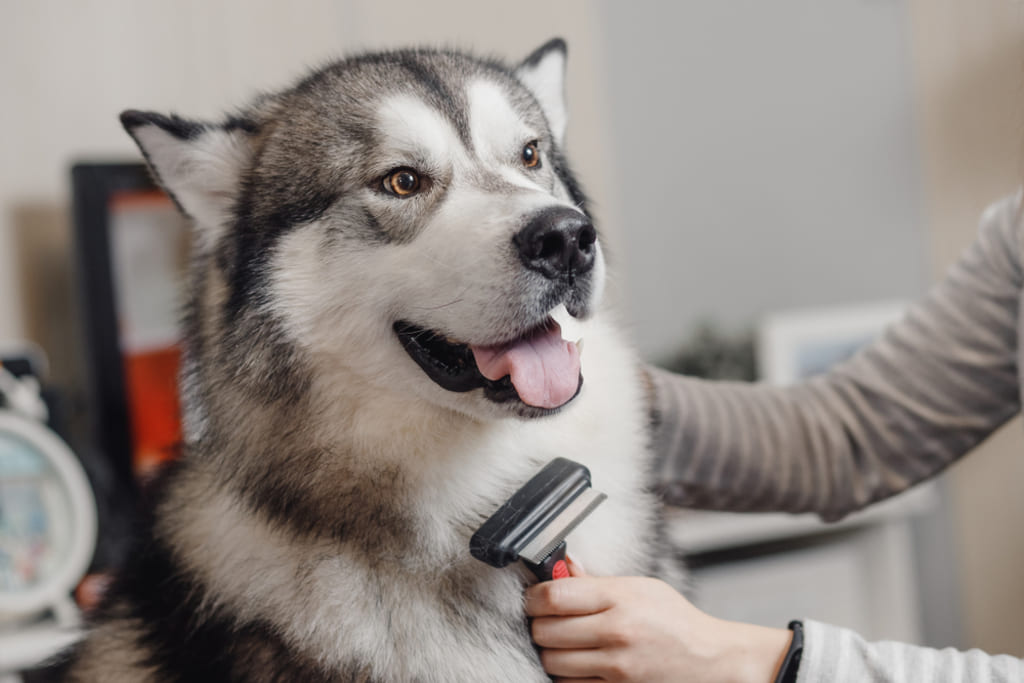
Maintaining a Husky’s thick coat is essential to keep your home free from loose fur on surfaces. Regular grooming prevents excessive shedding.
1. Skin and Coat Care
Huskies don’t usually have a strong odor and need minimal baths unless they get smelly.
Brushing their double coat once or twice a week with a rake-style brush helps manage shedding and evenly distribute skin oils.
2. Eye and Ear Care
Regular annual eye check-ups are crucial for Huskies due to their susceptibility to eye issues. Immediate vet attention is needed if you notice changes in their eyes.
Cleaning ears if there’s debris is recommended. Any signs of discomfort or unusual smell should prompt a vet visit for ear issues.
3. Dental Health
For a healthy mouth, brush your Husky’s teeth regularly, ideally two to three times a week, to tackle tartar buildup and bacteria. Daily brushing works wonders to ward off gum disease and bad breath.
4. Nail Trim
Trim their nails every one to two months if they don’t wear down naturally. Long nails can cause discomfort, so if you hear them clicking on the floor, it’s time for a trim.
Maintaining these grooming routines can help keep your Husky healthy and comfortable.
Are Siberian Huskies Hypoallergenic?
If you love Husky and are looking for a low-shedding dog, you might be disappointed to learn that Huskies are not hypoallergenic.
They shed a substantial amount of hair, potentially triggering allergies to dog dander and saliva. Huskies consistently lose hair throughout the day and undergo shedding twice a year.
Price
Various factors influence the price of a Husky, such as age, location, and breeder, which are essential considerations before making a decision. A Siberian Husky puppies for sale from a good breeder usually ranges from $600 to $2,000 on average.
The actual cost of Siberian Husky puppies for sale can fluctuate based on location and bloodline. Opting for a reputable breeder is crucial, steering clear of pet stores or online sellers to avoid potential connections with puppy mills.
Life Span
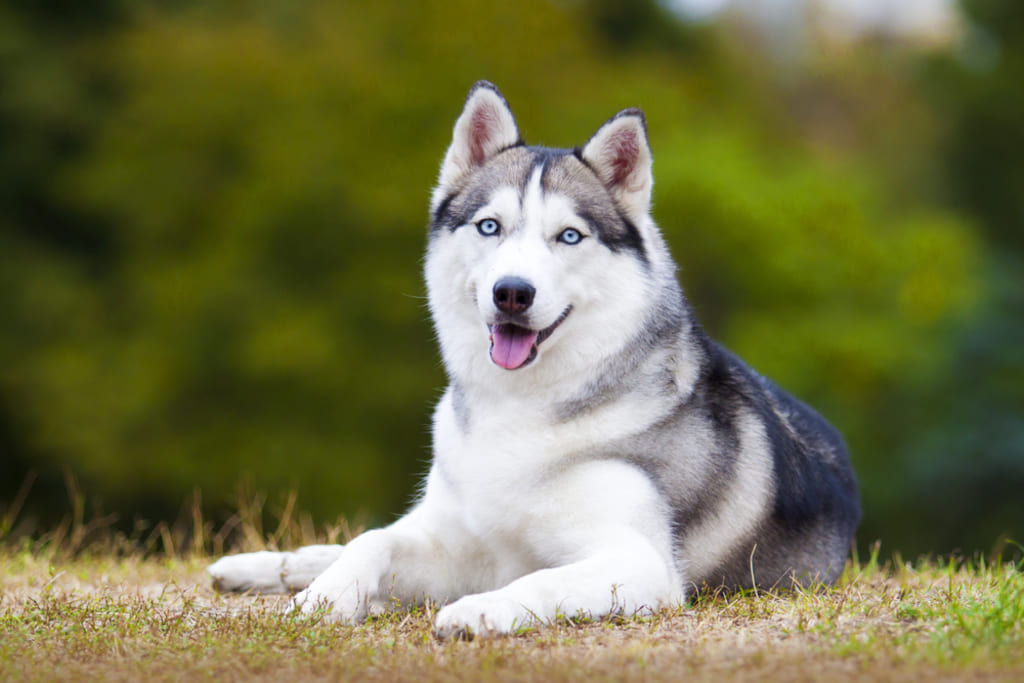
While medium-sized breeds often have a lifespan of 10 to 13 years, the Siberian Husky tends to live longer, typically ranging from 12 to 14 years. Generally, in most breeds, including Huskies, females tend to live a bit longer than males.
Kody, a Siberian Husky residing in Philadelphia, reached the impressive age of 16 before his passing in 2011. While there are scattered reports on the internet of Huskies living up to 18 or 19 years old, confirming their ages can be challenging.
FAQs
The loving and friendly nature makes Huskies a good family dog.
Siberian Huskies are considered dogs despite having a slight wolf-like appearance.
Huskies are naturally alert and are willing to defend and protect their family, but they are not good guard dogs.
Huskies are pack dogs, which makes them naturally talkative as they are used to communicating with their group.
Conclusion
Siberian Huskies have become very popular among dog owners. You can easily find their videos on social media and YouTube. There are even specific channels dedicated to them.
These dogs may appear like wolves, but they are very friendly and gentle. They are fun to have around and are a great fit for active families.
They are very playful and can easily get along with kids and pets with proper training. While they can be a bit difficult to train due to their stubborn nature, starting early can help make them good pets.
We hope our guide can help you decide whether a Siberian Husky is the right dog for you. Remember to choose a reputable breeder to avoid any genetic health problems.
Explore Further:








